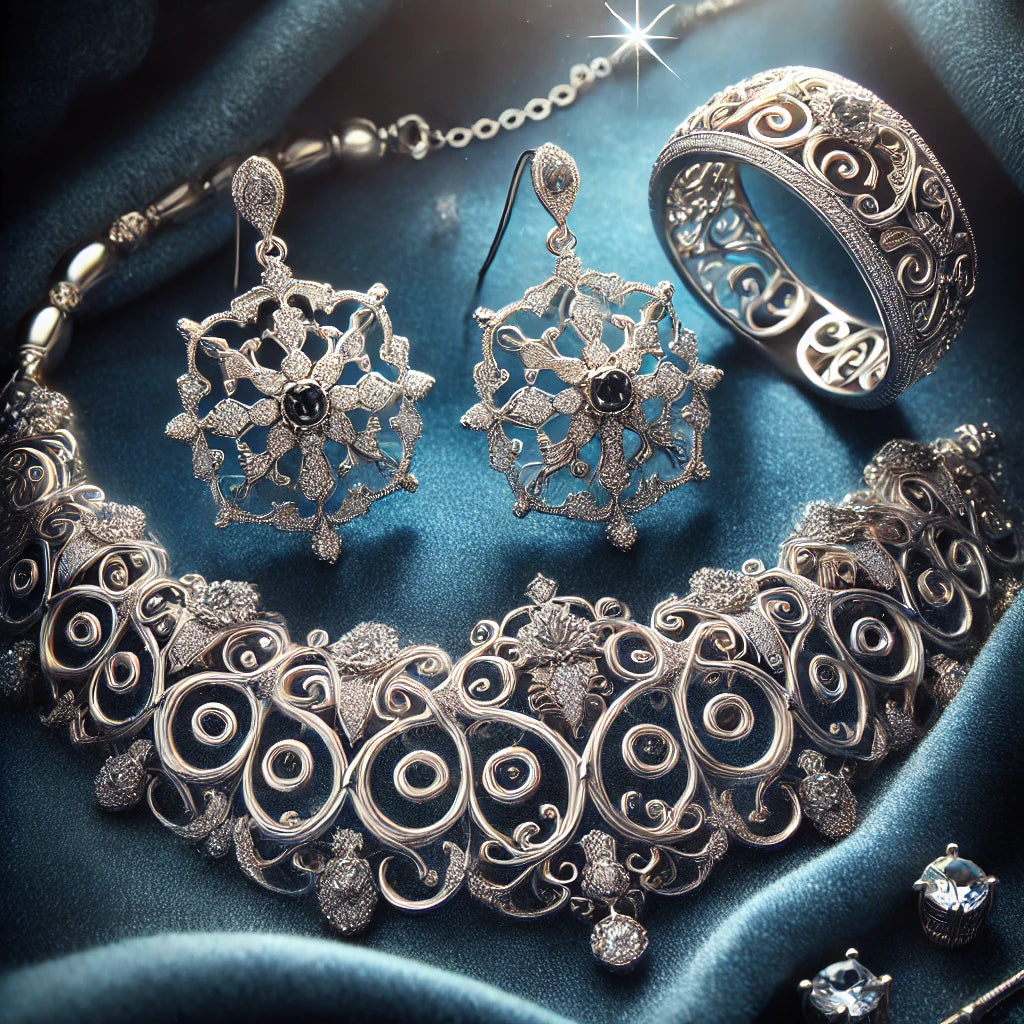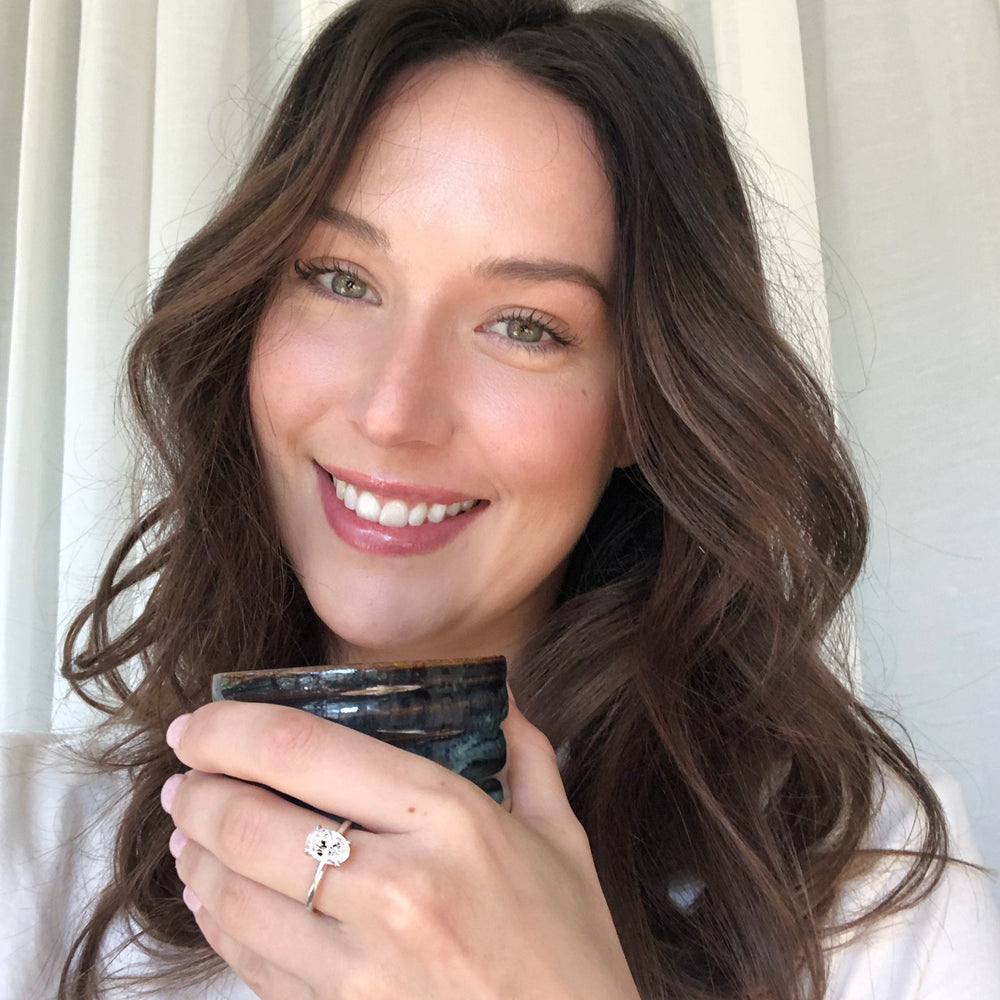
The Allure of Gold
Gold has long been considered the best metal for wedding rings, prized for its timeless beauty and versatility. Its unique appeal lies in the variety of colours it offers — yellow, white, and rose gold — each bringing a distinct aesthetic to jewellery design. Gold’s purity is measured in karats, with 24-karat gold being the purest form. However, jewellers often prefer 14K or 18K gold, as these blends offer a perfect balance of durability and luxury. Yellow gold exudes classic warmth, white gold has a sleek, modern finish, while rose gold offers a romantic, vintage look.
Gold remains a top choice for both jewellers and consumers because of its malleability, making it easy to craft intricate designs, and its resistance to tarnish. Its timeless elegance means that gold jewellery, especially wedding rings, remains a cherished symbol of commitment and style.
Shop the look

The Sheen of Silver
Silver is one of the most versatile types of jewellery metal, known for its bright sheen and affordability. Sterling silver, an alloy made from 92.5% pure silver and 7.5% copper, is the most common type used in jewellery. This blend offers increased strength without compromising the metal’s natural lustre. Silver is often chosen for its sleek appearance and ability to complement a wide range of styles, from minimalist designs to intricate, vintage-inspired pieces.
Compared to gold, silver is softer and more prone to tarnishing, but its affordability makes it a popular choice for everyday wear. While gold is often favoured for wedding bands and high-end pieces, silver shines in casual and comparatively inexpensive costume jewellery.

Platinum and Palladium Explored
When it comes to high-end jewellery, platinum and palladium are two metals that stand out for their exceptional properties. Platinum, known for its rarity and durability, is one of the best metals for engagement rings. It resists tarnishing and scratching, making it an ideal choice for everyday wear. Its naturally white sheen complements diamonds beautifully, enhancing their brilliance without overshadowing them. Additionally, platinum is hypoallergenic, making it suitable for those with sensitive skin.
Palladium, a member of the platinum group, shares many of these desirable qualities, but is lighter, which can make it feel less substantial than heavier metals like platinum, and it may not offer the same structural support in intricate designs. Palladium is not as widely recognised as gold or platinum in terms of resale or sentimental value, which may also affect its appeal to some buyers.

Exploring Alternative Metals
While less commonly used for engagement rings and wedding bands, alternative metals like titanium, tungsten, and stainless steel can be found in costume jewellery designs and men’s rings. These lesser-known materials offer unique characteristics that appeal to contemporary tastes. Titanium is exceptionally strong yet lightweight, making it ideal for comfortable everyday wear. Tungsten, known for its remarkable scratch resistance, boasts a polished finish that retains its shine over time. Stainless steel, often used for its affordability and versatility, offers durability without sacrificing style. Together, these materials showcase the diverse range of different types of metal for rings, proving that elegance and resilience can go hand in hand.

Maintaining Metal Jewellery
Regular jewellery maintenance is key to keeping your jewellery shining and durable. Use a soft cloth to gently buff and clean for gold, avoiding harsh chemicals. Silver requires occasional polishing with a silver cloth to prevent tarnish; store it in an airtight container to minimise exposure to air. For platinum and palladium, a mild soap solution and soft brush work wonders to maintain their lustre. When it comes to alternative metals like titanium and tungsten, a simple warm, soapy water rinse followed by drying with a soft cloth will do the trick. Always remove jewellery before engaging in activities that could cause scratches or damage.
Wrapping Up: Metals and Their Mastery
Ultimately, recognising the unique properties of different metals is key to selecting the perfect fine jewellery. Whether you’re exploring types of metal for wedding rings or considering the best engagement ring metal types, this knowledge empowers you to invest in pieces that reflect your style and will endure over time.













